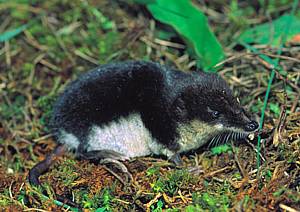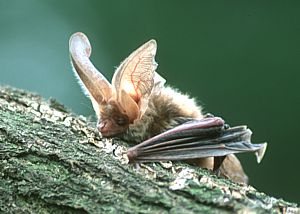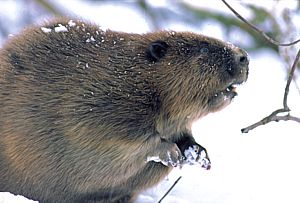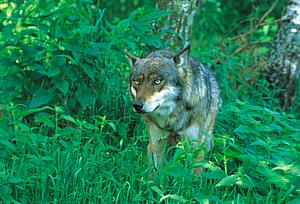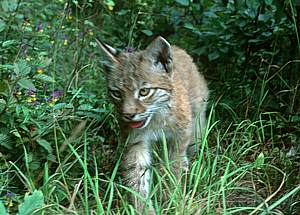|
PROTECTED FAUNA
|
|||||||||||||
Text:
2003
|
Mammals
In Poland there are officially 101 mammal species, 13 of which have not been confirmed recently. Thus, it may be assumed that 88 mammal species live in this country, including 13 endangered species. In the territory of the Wigry National Park there are 49 mammal species, which is 55% of this country’s fauna. It is assumed that this number will increase after scrupulous studies in bats and other smaller mammals.
According to the decree of the Minister of Environment as of the 26th September 2001 there are 69 species protected mammals, 26 of which can be found in the territory of the WNP. These are the following:
All of the aforementioned species are strictly protected except the beaver, which is subject to partial protection. As far as the European otter is concerned it is strictly protected except fishponds – breeding districts, where it is partially protected in accordance with the inland fishing regulations.
Of all the mammals of the WNP there are 8 species included in the Red List of Dying Out and Endangered Animals in Poland, and there are 7 species included in the Polish Red Book of Plants. Until recently the European beaver Phot.3 was enlisted in the Red Book as an endangered species. It was endangered but now – tthanks to protective measures – it has reconstructed its population up to the level of relative safety.
Among the protected species special attention should be paid to the wolf – recently a very controversial animal. The wolf is a predatory territorial species, living in vast boggy and bushy areas. The wolf goes hunting at night. In search of its prey the wolf covers long distances from 40 to 70 km. It is deers, roe deers, wild hogs, elks and occasionally farm animals that are the wolf’s main food. The wolf started to be killed since the animal became a significant pain in the neck for sports hunters and for farmers due to its frequent attacks at farming animals.
In the 50s of the 20th century in Poland the wolf was excluded from the jurisdiction of the game-law and organised projects aiming at its reduction were undertaken. At the beginning of the 80s the wolf was again included in the game-law’s regulatory provisions (with the species’ close season from April 1st to July 31st), except that in the south-east provinces of Poland hunting was allowed all the year round. The decree was quickly amended to extend the close season (from April 1st to July 31st) over all the territory of Poland. Over the recent years the sanitary role the wolf plays in natural environments has been appreciated. The animal mainly eliminates ill and weak animal individuals, thus contributes to improvement of the animal populations’ condition. As a result in 1995 the wolf was included in the List of Protected Animals in Poland. In the territory of the WNP the wolf can be encountered mainly in the southern part and in winter.
The WNP also boasts having another big predator – the lynx, now under strict species protection. In the territory of the WNP the lynx is observed very rarely. It is most willing to occupy vast forest complexes and that is why the lynx appears in the southern part of the park being the northern end of the Augustowska Primeval Forest. As late as towards the end of the 30s of the last century the lynx was designated as a game animal. In 1931 a close time was introduced from April 1st to October 31st. A drastic fall in the lynx’s population however and the animal’s positive influence it has over the deer resulted in the lynx’s official protection in 1995.
Another comparatively rare WNP’s mammal is also the river otter. It appears mainly in the rivers Czarna Hañcza and Kamionka where is thick vegetation and a sufficient number of burrows, dams and old tree roots. The otter’s main food is fish, but it also feeds on amphibians, molluscs, and other small animals. Until recently the species was subject to the game-law’s protection with its close time covering the whole year, but now it is a strictly protected species.
Of the protected animals to be only observed in the north-east part of Poland and be present in the territory of the WNP, there is the snow (or arctic) hare. Unlike other species in Poland the snow hare started to be strictly species protected as early as in 1952. However, it has never been numerous. The snow hare lives in the forest environment unlike the brown hare living in the open country. The snow hare is infrequent in the territory of the WNP and most of all in the south-east part of it, in greenwoods and woodland crops.
|
||||||||||||
|
|
|
